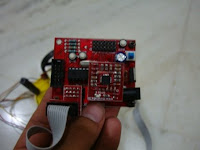
The field of robotics has never seized to amaze most of us and very recently a robot which responds to human thought is ready to step into our world. How cool is that?? Scientists and technologists have worked up a method to control a robot through the signals of the brain. I know it may seem hard to believe but it is true, nevertheless. This process needs the production of proper brainwaves, which are received by a cap. This cap has electrodes which are specially designed for this purpose and they reflect the thoughts of the person giving the instructions. This has been tested on a humanoid robot which received signals by scientists and moved from one location to another and performed the tasks as deciphered from the scientist’s brain signal.
These instructions are however very limited. Because they can only move forward pick up a few objects and transfer it to other locations. The team behind the achievement of this odd communication between the robot and the human have got about ninety four percent accuracy. This is what proof of concept illustration is all about. The researchers behind this project are from the University Of Washington. The person who operates the robot is the one who wears the cap containing the electrodes and watches the robot in action because there are cameras mounted on the robot which help us to monitor its action. When the objects to be handled are in view the robot sends the information to the computer screen.
The objects to be handled are highlighted on the screen and when the person happens to see the desired object highlighted the brain registers surprise and therefore sends the signals which allow the robot to pick up or handle that particular object. The path of the robot’s motion is also decided in a similar manner. In the near future the researchers intend to make the robot perform more complicated tasks and help them to adapt a lot better to the circumstances and the environment. The point is to make the robot handle objects which will help us in our daily lives to do the work in an efficient manner.






